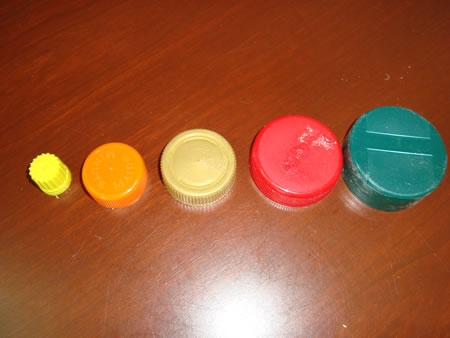
In the treatment of diseases of the respiratory system, drugs from the group of mucolytics are especially in demand, one of which is "Fluimucil". Is it prescribed to children, under what pathologies and in what doses?

Release form
Fluimucil is a product of the Italian pharmaceutical company Zambon and comes in several forms:
- Solution to be taken orally... It is a colorless liquid that smells like raspberries (in lower dosages) or strawberries and pomegranates (in higher dosages). The liquid is usually clear and may have a faint sulfur odor. This solution is poured into glass bottles of 100, 150 or 200 ml and supplemented with a measuring cap made of translucent plastic.
- Solution for injection, which is also used for inhalation. It is poured into ampoules made of dark glass. One box sells 5 ampoules, each containing 3 ml of a colorless transparent liquid with a slight sulfur odor. If you leave the opened ampoule in air, the solution may turn pink-purple over time.
- Granules from which the oral solution is made. They are sold packaged in multi-layer bags, and one pack holds 20, 30 or 60 of these portioned bags. The granules themselves are white-yellow in color, smell of orange and a little sulfur, and after stirring in water they get a yellowish orange drink.
- Effervescent tablets. They are available in packs of 10-20 pieces, but because of the high dosage, this form of "Fluimucil" is not prescribed for children.

Composition
All versions of "Fluimucil" contain a substance called acetylcysteine as their main ingredient. Its amount in different preparations is as follows:
- in a ready-made solution that is given to children to drink - 20 mg or 40 mg in 1 milliliter;
- in one sachet of granules - 100 mg or 200 mg;
- in a solution for injections and inhalation use - 100 mg in 1 milliliter (300 mg in an ampoule).
Additionally, the "Fluimucil" solution taken orally contains sodium saccharinate, flavoring agent, sodium hydroxide, sodium benzoate and some other substances. As part of the granules, sorbitol, flavor, beta-carotene and aspartame are added to acetylcysteine. The solution that is used for injection or inhalation additionally includes sterile water, disodium edetate and sodium hydroxide.
Operating principle
By its action, "Fluimucil" belongs to mucolytics, because its active ingredient affects the phlegm formed in the respiratory tract, as a result of which it is excreted from the bronchi more actively and the child recovers faster. The sulfhydryl groups present in acetylcysteine help break down the bonds in mucopolysaccharides that are in sputum. Due to this interaction, the viscosity of the bronchial secretion decreases.
The activity of the drug is not reduced if pus is present in the sputum. The drug also activates the synthesis of glutathione and has antioxidant properties, due to which harmful substances (toxins, free radicals) are removed from the body more actively. In addition, studies have shown that the use of "Fluimucil" reduces the severity and frequency of exacerbations in cystic fibrosis and chronic bronchitis.

Indications
The drug is prescribed for various diseases of the respiratory system in situations where the patient has too viscous sputum and this makes it difficult to cough up. "Fluimucil" is in demand when:
- laryngitis;
- acute bronchitis;
- tracheitis;
- pneumonia;
- laryngotracheitis;
- flu;
- bronchiectasis;


- chronic bronchitis;
- lung abscess;
- bronchiolitis;
- bronchial asthma;
- emphysema of the lungs;
- atelectasis of the lung due to mucous plugs;
- cystic fibrosis (as one of the means of complex treatment).


In addition, the drug is prescribed after an injury or surgery, so that the viscous bronchial secretion is easier to excrete from the respiratory tract. The medication is also used before various diagnostic procedures, for example, when the patient is to undergo bronchoscopy.
Many doctors also prescribe Fluimucil for sinusitis and otitis media, as it facilitates the passage of mucus from the nasopharynx and reduces congestion in the ears.

From what age is it allowed to take?
"Fluimucil" in the form of granules and a ready-made solution can be used from birth, but children under two years of age are given such a remedy only as prescribed by a doctor, who calculates the required dose of the active ingredient based on the patient's weight. It is contraindicated to give the drug to a newborn or nursing infant without a medical prescription.

As for the injectable form, the appointment of this type of "Fluimucil" to children under one year old is carried out only for health reasons, and the administration of the drug should be in the hospital. If a child is under 6 years old and it is possible to give the medicine by mouth, they try to avoid injection.
Contraindications
"Fluimucil" is not used for hypersensitivity to any of the components in the solution or granules. In addition, the medicine in any form cannot be used in children with exacerbation of gastrointestinal ulcer disease. If a child has been diagnosed with kidney, adrenal or liver disease, the use of the medication requires medical supervision. Granules are contraindicated in patients with phenylketonuria. Patients with bronchial obstruction or asthma are prescribed medication provided there is sufficient drainage of secretions.

Side effects
The drug in ampoules occasionally provokes local reactions, for example, during inhalation, a cough, stomatitis or rhinitis may appear, and when injected into a muscle or vein, a slight burning sensation appears at the injection site. In addition, some children with any form of "Fluimucil" have:
- rash on the skin;
- heartburn;
- itchy skin;
- bleeding from the nose;
- nausea;
- bronchospasm;
- noise in ears;
- diarrhea;
- stomatitis;
- hives;
- vomiting.
If you develop any of these symptoms or other discomfort, you should see your doctor.


Instructions for use
Granules
The contents of the sachet must be poured into a third of a glass of water, and then given to the child to drink. It is allowed to stir the powder only in glassware. If this form of "Fluimucil" is assigned to a baby of the first year of life, the prepared solution is given from a bottle or from a spoon. The dosage for infants under one year old is determined by the doctor individually. For every kilogram of body weight such small patients require 10 mg of acetylcysteine.
For babies 1-2 years old, one sachet with 100 mg of the active ingredient is diluted at a time. In such a single dose, the medication is given twice a day. Patients 2-6 years old "Fluimucil" can also be given in the same dosage, but the reception will be three times. Also, children aged 2 to 6 years can be prescribed a two-time intake of "Fluimucil" in a single dose of 200 mg.
If the patient is already six years old, then he is prescribed 200 mg sachets of the active ingredient. In this dose, the medicine is taken 2 or 3 times a day. The duration of treatment is determined depending on the indications - in the acute process, the granules are prescribed for 5-10 days, and chronic pathology can be treated within several months.


Oral solution
Before the age of 14, a drug with a concentration of 20 mg / ml is often prescribed. It is given 5 ml to patients 2-5 years old 2-3 times, and children over 6 years old - 3-4 times a day. Six-year-old children and older can be prescribed a more concentrated solution - 4 ml twice a day. For a teenager over 14 years old, medication 40 mg / ml is given once in an amount of 15 ml, which corresponds to 600 mg of the active substance.
Injections
When prescribing Fluimucil injections, a child under six years of age needs an individual dosage calculation. For such patients, the drug is prescribed 10 mg for each kilogram of weight. If the child is from 6 to 14 years old, then he is given intravenous injections once or twice a day, 1.5 ml, which corresponds to 150 mg of acetylcysteine. Before the injection, the contents of the ampoule are diluted 1 to 1 with glucose solution or saline.
The drug can also be injected into the muscles using a long needle to allow the solution to penetrate deeply into the muscle tissue. The duration of fluimucil injection therapy is set separately for each child, but it rarely exceeds 10 days.


Inhalation
For procedures, only solution in ampoules is used, using the contents of one ampoule for one inhalation (3 ml). It is recommended to breathe "Fluimucil" once or twice a day, but sometimes the doctor prescribes three or four procedures a day. The duration of inhalation treatment is usually 5-10 days, but in some pathologies, the medication can be used longer.
In addition to inhalation, the solution from the ampoules can be dripped into the nose or ear. The dosage and frequency of such use with severe rhinitis, otitis media or sinusitis is determined by the doctor.

Overdose
Even very high doses of "Fluimucil" do not have a harmful effect on the child's body, so there were no cases of overdose of any form of the drug.

Interaction with other drugs
The simultaneous use of "Fluimucil" and any drugs that suppress the cough reflex will worsen the patient's condition, as it will increase the stagnation of sputum in the respiratory tract. It is not recommended to give the child Fluimucil and drugs based on ampicillin, tetracycline or amphotericin B at the same time, as their activity will decrease. There should be a break of at least 2 hours between taking such medications.
When used together with paracetamol preparations, their toxic effect on the liver will decrease. If you give "Fluimucil" together with drugs based on nitroglycerin, the therapeutic effect of such drugs will increase. When injecting, it is forbidden to mix the solution in the same syringe with other drugs besides sodium chloride or dextrose solutions.

Terms of sale
To buy "Fluimucil" in ampoules requires a prescription from a doctor. Other forms of the drug are over-the-counter. The average price of 20 sachets of granules with an active substance content of 200 mg in one sachet is 150-160 rubles. For 100 ml of a solution with a dosage of 20 mg / ml, you need to pay about 200 rubles, and a package of "Fluimucil" for injections and inhalations costs about 220 rubles.

Storage conditions
All types of "Fluimucil" should be stored at + 10 + 25 degrees in a dry place. The drug should not be freely available to prevent children from finding it. The shelf life of the drug in granules is 3 years, and in ampoules - 5 years. An opened ampoule can be stored for up to 24 hours in a refrigerator, but it is suitable only for inhalation use (a sterile solution is needed for injections).

Reviews
In most cases, the treatment with "Fluimucil" responds positively, calling this medication highly effective and effective. The form of release of the drug is called convenient, and most patients like the taste of liquid versions of the drug. Side effects when taking "Fluimucil" are very rare, and the price of the drug is usually called acceptable. On the downside, many mothers refer to a sulfuric smell, and in some reviews they complain about the lack of a therapeutic effect.

"Fluimucil-antibiotic IT"
Such a drug is produced in the form of a lyophilisate, which can be injected (intramuscularly) or used for inhalation. In addition, this medicine is sometimes given endotracheally, dripped into the nose or ears.
The main component of the lyophilisate is a combination of acetylcysteine with the antibacterial agent thiamphenicol. One bottle contains 810 mg of this ingredient, supplemented with disodium edetate. One package contains 3 bottles of medicine with a white or yellowish mass and 3 transparent ampoules with a solvent. Inside such ampoules, there are 4 ml of sterile water, which must be diluted with the lyophilisate before use.


Once in the patient's body, the active compound of the drug is broken down to form acetylcysteine (this component thinns phlegm) and thiamphenicol (this ingredient has an antibacterial effect). "Fluimucil-antibiotic IT" is in demand for lingering pneumonia, bronchiolitis, whooping cough, bronchitis, lung abscess and other diseases. It is also used for sinusitis, laryngitis, or otitis media.
The dosage of the medicine for children is determined by the method of application, and the course of treatment does not exceed 10 days. Among the possible side effects of such a medication, an allergy or a local reaction is noted, and contraindications to the use of a lyophilisate are not only hypersensitivity to its components, but also anemia, thrombocytopenia or leukopenia. You can buy the drug only with a prescriptionand its shelf life is 3 years.

Analogs
The most famous analogue of "Fluimucil" is a drug called "ACC". It is produced in effervescent tablets, granule sachets, syrup and solution for inhalation and injection. This remedy is used for the same indications in children over 2 years old. In addition, instead of "Fluimucil", the child may be prescribed another drug with an expectorant effect, for example, one of the herbal medicines ("Herbion", "Bronchipret", "Prospan", etc.) or a medicine based on ambroxol ("Ambrobene", " Flavamed "," Lazolvan ").

How to use "Fluimucil", see the next video.



